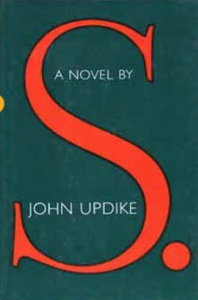 Updike scholars who know James Schiff’s John Updike Revisited (1998) will find this familiar ground. But Books Tell You Why recently published an article by Brian Hoey titled, “Hawthorne Heights: How John Updike Rewrote The Scarlet Letter,” which focuses on Updike’s reimagination of Hester Prynne in his novel S.
Updike scholars who know James Schiff’s John Updike Revisited (1998) will find this familiar ground. But Books Tell You Why recently published an article by Brian Hoey titled, “Hawthorne Heights: How John Updike Rewrote The Scarlet Letter,” which focuses on Updike’s reimagination of Hester Prynne in his novel S.
As Hoey writes, “The novel was, in many ways, meant as a rebuttal to the critics who have questioned Updike’s ability to create well-rounded female characters.” Hoey notes that Updike strove “for a sympathetic portrait of middle-aged womanhood, while also having a little fun at the expense of enlightenment-seekers as a group.”
Hoey posits that “any criticism of [Updike’s] work gives him an opportunity to improve his craft.” The Witches of Eastwick was another attempt “to write about women who did have careers of a sort” and who were “much more dynamic than the men”—issues that remain current today.
“If the novel were reevaluated now, in an era where examinations of the ways in which society shames women seems especially urgent,” Hoey suggests, “it would be found worthy of its inspiration.” But he worries that “readers would find that beneath Updike’s trademark lyricism.”
Read the full article here
